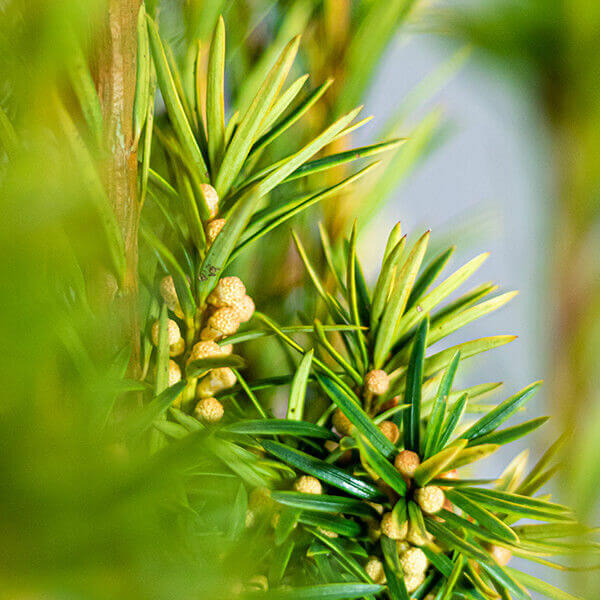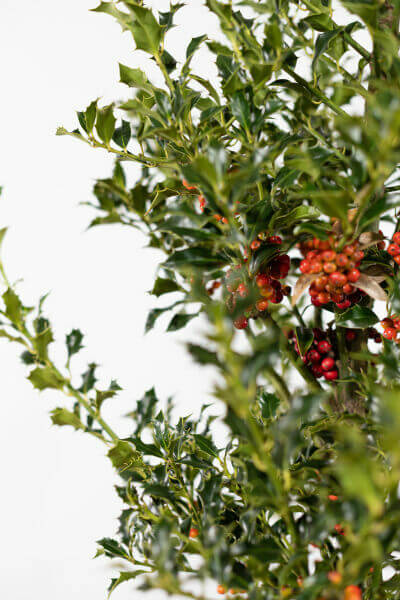Hedging Plants For Wildlife Friendly Gardens
Boost your garden's appeal with lush hedge ranges such as Yew (Taxus), Thuja, Laurel, Photinia, and Bamboo, celebrated for their structural stability and environmental advantages.
Yew and Thuja provide evergreen protection and winter season durability, while Laurel uses rapid development and broad, aromatic leaves.
Photinia adds seasonal appeal with its lively red foliage, and Bamboo lends a low-maintenance, peaceful atmosphere.
These hedges improve air quality, minimize sound, and create tranquil, private areas.
Proper planting, spacing, and upkeep make sure vigorous growth and eco-friendly consistency.
Explore how these rich ranges can raise your garden's appeal and well-being.
Key Takeaways
Change Your Garden With Lush Hedge Varieties
- Select Yew for its dense, evergreen development and unequaled longevity.
- Choose Laurel for its quick development and broad leaves, making sure fast privacy.
- Choose Photinia for its lively seasonal foliage, which turns a striking dark red.
- Utilize Bamboo for a low-maintenance, winter-hardy hedge with visual appeal.
- Area plants 2-3 per meter and prune frequently for ideal development and health.
Popular Hedge Plants
When transforming a garden with lavish hedge varieties, it's vital to consider popular hedge plants such as Yew, Thuja, Laurel, and Photinia due to their special qualities and advantages.
Yew (Taxus) is highly esteemed for its durability and thick, green development, making it a prime choice for withstanding landscapes.
Thuja is noted for its evergreen foliage and robust winter resilience.
Photinia adds seasonal vibrancy with red leaves that darken in time, producing dynamic visual appeal.
Laurel offers rapid growth and aromatic, broad leaves, perfect for fast personal privacy.
Furthermore, Bamboo is an outstanding choice for ambiance, offering a low-maintenance, winter-hardy alternative that boosts the garden's visual with its stylish, swaying canes.
These choices deal with a variety of horticultural needs and choices.
Advantages of Garden Hedges
Garden hedges provide a wide range of benefits, making them an important addition to any landscape. These natural barriers are economical to carry out and supply significant wind security, improving air flow and contributing to sound reduction. The dense foliage of hedges like Thuja and Beech guarantees personal privacy by obstructing exposure, producing a remote and peaceful environment.
Hedges also play an essential role in microclimate regulation, providing a steady environment that fosters plant development and minimizes temperature level fluctuations. Their complex leaf structures filter toxins, improving air quality and adding to a much healthier garden community.
Moreover, hedges stand out in sound decrease, soaking up and deflecting sound waves to lower ambient noise levels. This double performance of providing both acoustic and visual privacy improves the total tranquility and visual appeal of any garden.
Planting and Upkeep Tips
For a successful hedge, meticulous preparation of the planting area is important. Make sure the soil has appropriate pH and drainage to support strong root advancement.
Area the plants properly for the chosen species. Water the hedge frequently during its initial growth phase, adjusting as needed with seasonal changes.
Execute a methodical insect control and illness prevention method, utilizing chemical or organic treatments when necessary. Regularly inspect for aphids, termites, and fungal infections.
Apply mulch to maintain wetness and reduce weeds. Seasonal pruning promotes thick growth and air circulation, essential for plant health.
Following these guidelines will assist you cultivate a dynamic, properly maintained hedge that boosts the appeal of your garden.
Spacing and Cutting Standards
Spacing and Trimming Guidelines
Correct spacing and cutting are important for cultivating healthy, visually appealing hedges. Adequate spacing makes sure each plant receives sufficient nutrients, light, and air flow.
Follow these guidelines for ideal hedge maintenance:
- Spacing: Position hedge plants 2-3 plants per meter to encourage robust development.
- Pruning Strategies: Routine pruning is essential for keeping preferred hedge height and shape. Trim new growth in summer season and cut back older wood during winter season.
- Seasonal Care: Adjust cutting schedules and methods according to seasonal requirements to guarantee plant health.
- Hedge Height: Regularly display and trim to keep the desired hedge height and accomplish uniform looks.
Following these actions will ensure your hedge prospers, enhancing both the appeal and performance of your garden.
Picking the Right Hedge
Choosing the Right Hedge
Picking the appropriate hedge involves examining factors such as fully grown height, foliage density, and ecological resilience. Effective hedge plant selection needs comprehending each species' growth attributes and site-specific flexibility.
For example, Yew (Taxus) provides outstanding longevity and dense growth, while Thuja is noteworthy for its winter season strength. Additionally, considering maintenance requirements is important; fast-growing types like Laurel or Privet need routine cutting, whereas low-maintenance alternatives like Bamboo or Ivy may be preferable for those seeking minimal upkeep.
Environmental factors such as soil type, light availability, and wetness conditions must also direct the selection process. This mindful method makes sure the selected hedges will thrive, supplying both practical and aesthetic advantages to the garden landscape.
Shipment and Planting Guidance
To ensure your hedge plants prosper, they ought to be provided by specialized couriers and planted immediately upon arrival.
Follow these essential steps for successful planting:
- Soil Preparation: Improve the soil with raw material to improve drainage and nutrient material.
- Planting Depth: Develop a trench two times the width and equal to the depth of the root ball.
- Watering Techniques: Water thoroughly after planting, keeping the soil consistently damp but not saturated.
- Mulching: Use a layer of mulch to maintain wetness and suppress weeds.
Customer Assistance and Service
Given the crucial role of prompt help in horticultural pursuits, our client assistance team is offered six days a week through telephone, email, and social media to offer skilled advice and promptly address any issues. Their dedication to quick response times guarantees customer satisfaction by resolving queries connected to plant health, optimal planting approaches, and maintenance schedules.

Reaction Time
-------------------
Within 48 hours
This comprehensive support group, strengthened by a stellar 9.3/ 10 consumer ranking, highlights our commitment to improving the gardening experience for every customer.
Regularly Asked Concerns
For How Long Does It Consider Hedge Plants to Establish?
Hedge plants generally need one to 3 years to become fully developed, with the specific period varying by species and growing conditions.
Efficient care throughout this crucial duration is necessary for robust growth. Consistent watering, watchful weed control, and proper fertilizer application are pivotal in promoting strong root advancement.
For example, fast-growing species like Laurel may establish faster, while slower-growing varieties such as Yew may take longer. Thorough upkeep accelerates the establishment process, leading to thick and healthy hedges.
What Are the Best Hedge Plants for Privacy?
The concern of the very best hedge plants for privacy includes examining evergreen and deciduous alternatives.
Evergreen hedges like Thuja, Laurel, and Cypress offer year-round coverage, ensuring constant personal privacy.
In contrast, deciduous hedges such as Beech offer seasonal personal privacy, shedding leaves in chillier months.
Key upkeep suggestions for privacy hedges consist of regular cutting, fertilizing in spring, and appropriate spacing-- generally 2 to 3 plants per meter.
Additionally, constant watering and diligent weed elimination are essential for promoting healthy, dense development.
Can Hedge Plants Attract Wildlife to My Garden?
Yes, hedge plants can bring in wildlife to your garden by offering necessary benefits like shelter, food, and nesting websites, consequently enhancing regional biodiversity. For example, yew, holly, and laurel are outstanding for attracting birds, while ivy supports a range of insects.
However, it is very important to note that there are some downsides, such as increased maintenance to handle bugs and regular maintenance. Thoroughly selecting and preserving hedge ranges can help stabilize these advantages and disadvantages, ultimately promoting a lively and sustainable community in your garden.
Exist Any Flowering Hedge Plants Available?
Yes, there are flowering hedge plants offered that can boost the appeal of your garden.
For example, Elaeagnus, also called Olive Willow, produces aromatic white flowers in the fall, adding a touch of beauty.
Photinia, another popular option, showcases lively red leaves that grow into a rich green, creating a dynamic visual impact throughout the seasons.
To make sure these plants thrive, it's necessary to practice correct pruning techniques and seasonal maintenance, such as trimming new growth in the summer season and cutting down in the winter.
These measures will help maintain the health and aesthetic appeal of your flowering hedges.
How Do I Prevent Bugs in My Hedge Plants?
To avoid bugs in hedge plants, use natural bug control approaches and keep correct hedge care. Present beneficial insects like ladybugs, which prey on harmful pests, to create a balanced ecosystem.
Routinely inspect your hedges for signs of infestation and quickly eliminate any affected parts to prevent the spread. Make sure the health of your hedges by using well balanced fertilizers and offering sufficient water.
Utilize mulching to keep soil moisture and proper spacing to minimize plant tension and promote robust development. These practices jointly assist in lessening bug issues and maintaining a healthy hedge.
Conclusion
In essence, picking the ideal hedge ranges such as Yew, Thuja, and Laurel can change any garden into a serene sanctuary. These plants offer year-round greenery, enhance aesthetic appeal, and offer useful advantages like noise reduction and wind protection.
Correct planting methods, accurate spacing, consistent watering, and seasonal cutting are essential for optimum development.
Reliable shipment services and professional client support make sure a smooth experience from purchase to planting, making it simpler than ever to raise your outside space.
Garden hedges use a plethora of advantages, making them a valuable addition to any landscape. These natural barriers are cost-efficient to click here execute and provide considerable wind protection, boosting air circulation and contributing to sound reduction. The thick foliage of hedges like Thuja and Beech ensures personal privacy by obstructing exposure, developing a peaceful and remote environment.

Pruning Methods: Regular pruning is essential for keeping preferred hedge height and shape. Trim brand-new development in summer and cut back older wood throughout winter.